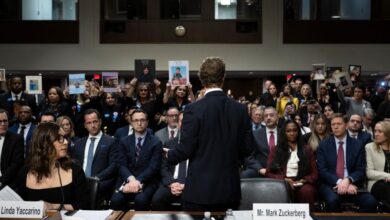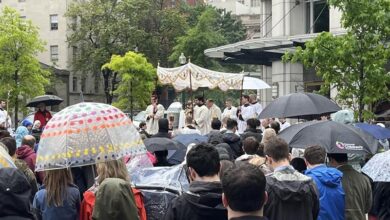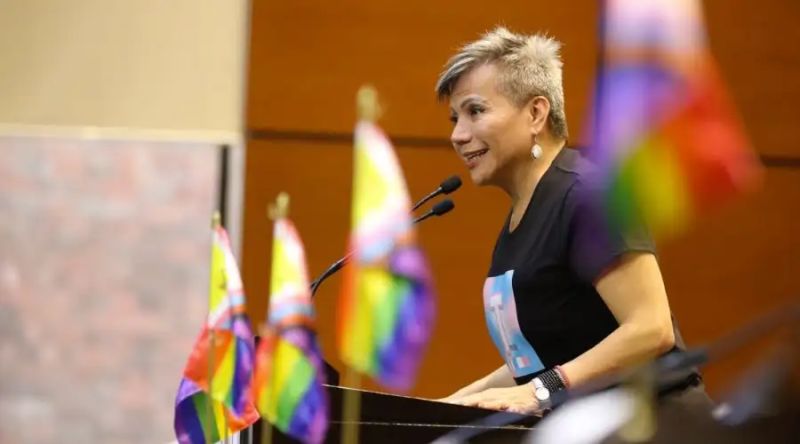Will Harvard return an alleged third-century relic of St. Sebastian to the Church?

 Harvard University. / Credit: Jon Bilous/Shutterstock
Harvard University. / Credit: Jon Bilous/Shutterstock Boston, Mass., Jun 17, 2024 / 07:00 am (CNA).
As Harvard University undergoes the process of returning some of the thousands of Indigenous human remains in its possession to those with cultural, ancestral, or religious ties to them, one Catholic group is calling on the university to return a sacred first-class relic of St. Sebastian to the Catholic Church.
“The appropriate location for a relic of St. Sebastian is a Catholic church, chapel, or shrine, not the library of a secular university,” C.J. Doyle, executive director of the Catholic Action League of Massachusetts, told the College Fix in May.
“Harvard should do the right thing and donate it to a local Catholic church,” he said.
In a statement to CNA, Harvard Library spokeswoman Kerry Conley said the relic was acquired by the school through a purchase from an antiquarian bookseller in 2021.
The bone relic, in a medallion reliquary, is accompanied by a certificate of authenticity by the Catholic Church with two illegible signatures, according to its description on Harvard Library’s website.
The coat of arms of Bishop Nicola Angelo Maria Landini, titular bishop of Porphyreon — which is present-day Jieh, Lebanon — and vicar general of the Vatican Curia are on the certificate, which is dated Oct. 12, 1774.
A cartouche on the reliquary says “S. Simonii Ap,” indicating that “it might have previously held a relic of St. Simon the Zealot,” the description says.
The relic is located in Houghton Library in its special collection stacks, an area only available to staff and researchers by request.
Conley said that, although the university listed the relic in a 2022 report detailing human remains located in Harvard museum collections, the object “has not been tested and we do not know whether it is indeed human, nor can we say whether it dates from the third century.”
“It was included in the university’s report because the documentation it accompanied purported the bone to be human; however, there is no genetic testing or carbon dating to affirm that claim,” she said.
Who is St. Sebastian?
In Pope Francis’ March 2019 postsynodal apostolic exhortation Christus Vivit, the Holy Father spoke of St. Sebastian as a role model for young people.
“In the third century, St. Sebastian was a young captain of the Praetorian Guard. It is said that he spoke constantly of Christ and tried to convert his companions, to the point that he was ordered to renounce his faith,” the Holy Father wrote.
“Since he refused, he was shot with arrows, yet he survived and continued to proclaim Christ fearlessly. In the end, Sebastian was flogged to death,” the pope wrote.
The early Church martyr is the patron saint of archers and athletes.
Is the relic real?
There are many purported relics that are actually not real relics at all, according to Sean Pilcher, an expert on relics and director of Sacra, an organization that promotes the veneration of relics while repairing and authenticating them.
“The question is less about whether it is actual human remains because there’s basically no doubt that it’s human remains. The question is: ‘Is it the relic that it purports to be? Are the bones in the reliquary the bones of that saint or is it a forgery?’” Pilcher told CNA in a phone call.
Pilcher, who has worked with thousands of relics, said he wouldn’t be able to authenticate the purported St. Sebastian relic at Harvard from afar.
“I’d have to examine and compare the sources, find out where it came from, look at the seal and the document and some other tangibles about the relic,” he said.
Should Harvard return the relic?
If the relic is authentic, does Harvard have an obligation to transfer it to the Catholic Church?
In an email to CNA, Father Carlos Martins, another relic expert and director of Treasures of the Church, said “yes.”
“Yes, as would any organization that comes into possession of something held deeply sacred by a church or by another organization, such as a nation,” he wrote.
“Imagine if an individual somehow came into legal ownership of the original copy of the Declaration of Independence,” Martins wrote. “While it might be tempting for him to keep it — or even sell it for the great sum it would fetch — the noble, honorable, and moral thing to do is to return it to the people of the United States.”
“Great sensitivity and self-transcendence must be exercised whenever something is held to be sacred by others,” the priest said.
“What is sacred is not just important. It is part of the very identity of the people who hold it to be such. It is a grave injustice for the object to be profaned or even just alienated from those people.”
Will Harvard give the relic to the Church?
A policy set by Harvard in 2022 put in place a process for the return of human remains and other sacred objects possessed by the university but notes that returns would be on a “case-by-case basis.”
Claimants must approach the university and provide evidence of “standing” for their request of the object or remains, the policy says.
“Claims should demonstrate the significance of the object to the claimant, a category that could include sacred, cultural, religious, national, communal, or historical importance. How does the absence of the item affect the claimant community? Does the significance or other attribute of the item make it unsuitable for display and/or continued research? Are there other claimants?” the policy says.
As of June 7, no one has reached out to Harvard requesting the St. Sebastian relic, according to Conley.
The Archdiocese of Boston did not respond to a request for comment about the alleged relic at Harvard.
Harvard’s policy for the return of human remains is an extension of the school’s commitment to fulfill its legal obligation as outlined in federal law via the Native American Graves Protection and Repatriation Act of 1990 (NAGPRA). That law provides for the return of Native American human remains and cultural objects to the Native peoples.
Holly Jensen, a Harvard Faculty of Arts and Sciences spokeswoman, told Harvard’s student university newspaper in February that the school’s Peabody Museum has repatriated over 40% of its more than 10,000 held Indigenous “ancestors” under NAGPRA.
The Peabody Museum wrote on its website that “to address return of cultural items beyond NAGPRA, Harvard University published guidelines on the Consideration of Claims for the Return of Items in Harvard University Collections (2022),” which is the name of the policy.
Relics in other museums
According to Pilcher, the problem of relics in secular places is wider than just Harvard: “Any art museum of reasonable size in a large American city possesses sacred relics.”
In the Art Institute of Chicago, there is a relic of St. Christina. The museum also has relics of St. Anne, Sts. Bernward and Godehard of Hildesheim, St. Anianus, and St. Lawrence.
In the Cleveland Museum of Art, there is another bone relic of St. Sebastian. And in New York’s Metropolitan Museum of Art, there is a copper reliquary from Italy that is purported to hold the tooth of St. Mary Magdalene.
Some reliquaries in American museums appear to still be holding objects inside them, such as this one from the Detroit Institute of Arts. However, its online exhibit does not specify whether the relic is still held within.
Martins said that relics “possess an innate sacredness” and are forbidden to be sold under canon laws.
“They are not sacramentals (e.g., rosaries, water, scapulars, crucifixes) that are blessed and become holy through the blessing (i.e., water that is blessed is called holy water),” he said.
“Relics are holy in and of themselves simply by being what they are — an object associated with a saint, who is a ‘temple of the Holy Spirit,’” he said.





